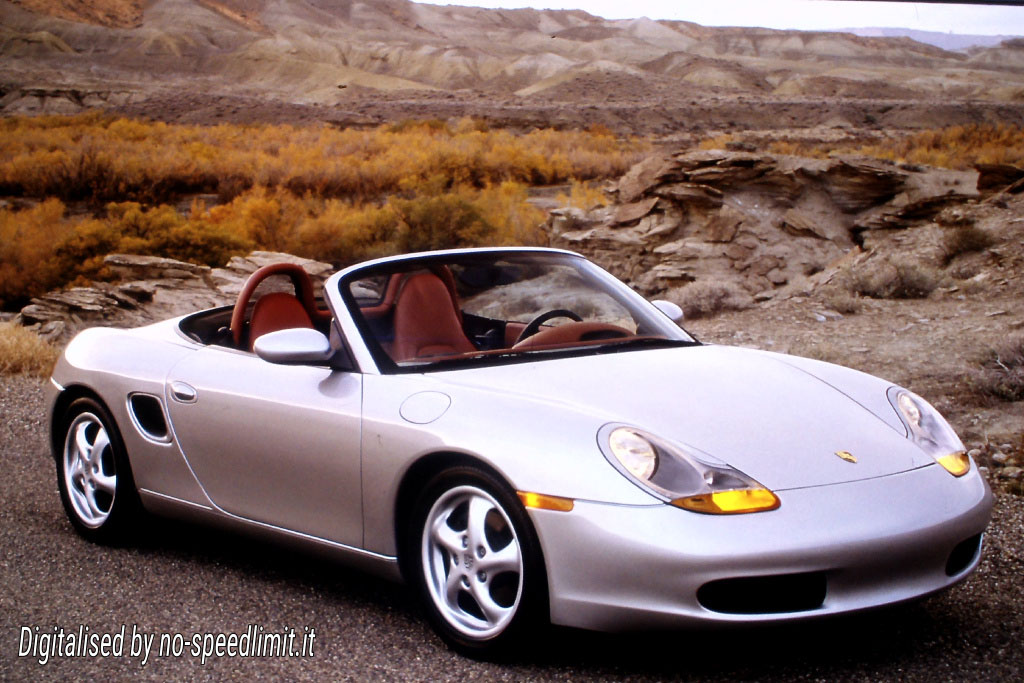
Boxster 1998 - USA
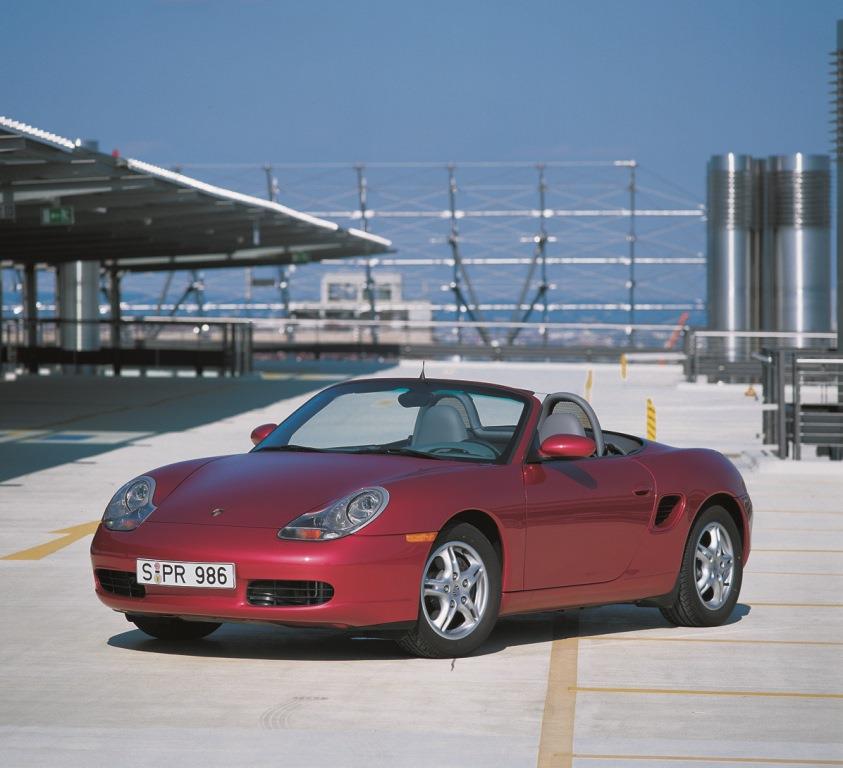
The Classic package places the emphasis on classy but reserved style. Two of the basic features included in this package are metallic paintwork and all-leather seats. The discreet interior, in turn, is emphasized by the granite-grey paintwork on the windscreen frame, on the storage box covers in the doors, on the centre tunnel, and on the interior linings and trim. The instruments surrounds, door closing handles and gearshift lever cover, on the other hand, are finished in amber.
The plastic fuel tank is now the same as on the Porsche 911 models, with an increase in capacity from 57 to 64 litres (12.5 - 14.1 Imp gals). The result is an increase in the car’s cruising range by approximately 70 km or 50 miles.
The Porsche Boxster is now also available as an option with Litronic headlights, special gas-discharge units illuminating the road ahead far more brightly and thoroughly and thus significantly improving safety at night. A further contribution to your extra driving safety is the dynamic headlight range control considering not only the load the vehicle is carrying, but also any change in body angle (sway) due to dynamic driving conditions. The halogen bulbs (H7) for the high-beam headlights are surrounded by a particularly efficient free-space reflector. Whenever the driver activates the high beams, the Litronic low-beam headlights remain switched on and also move their own beam up by way of headlight range control in order to improve illumination of the road ahead. A further feature of the Litronic headlights, finally, is the headlight cleaning system.
The various features previously combined within the sports package are now available individually according to the driver’s personal taste: sports seats with enhanced side support, a sports suspension with firmer and shorter springs, harder dampers and reinforced anti-roll bars, as well as even more sporting and dynamic light-alloy wheels wider and with larger diameter. Apart from 17-inch wheels with tyres measuring 205/50 ZR 17 and 255/40 ZR 17, the Boxster is now also available with 18-inch turbo-look wheels, in which case tyres have the same dimensions as on the 911 Carrera (225/40 ZR 18 and 265/35 ZR 18).
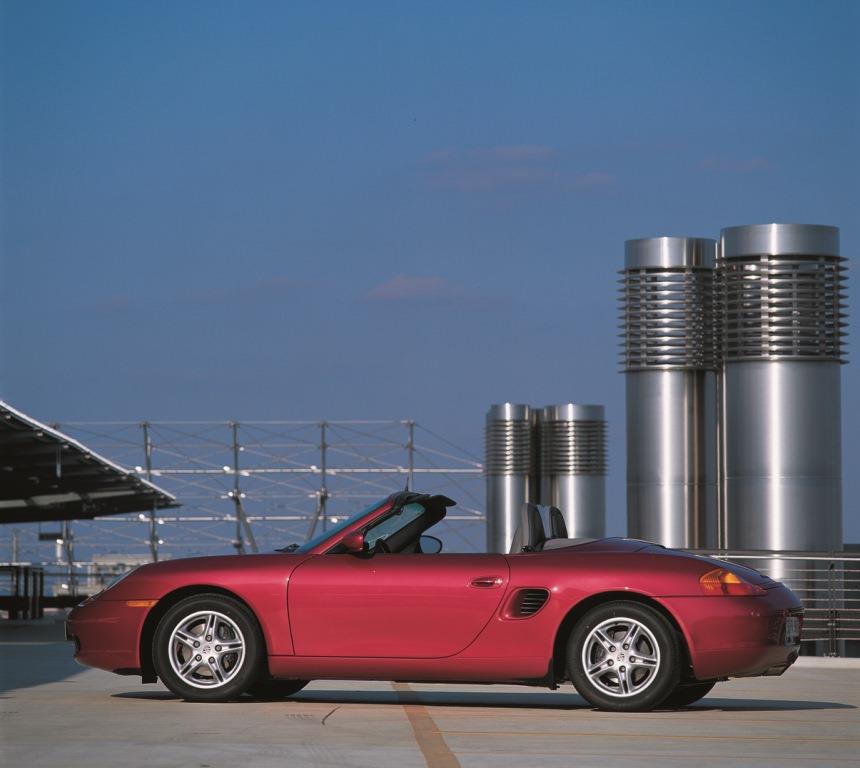
The engine in midship arrangement concentrates the weight of the car around the middle. This guarantees effortless, agile driving behaviour, making bends a pleasant, easy exercise.
Fitted in the middle of the car, the very compact boxer engine leaves ample space for two luggage compartments. In all, the Boxster has 260 litres or 9.1 cu ft of loading space, more than any other roadster.
Predetermined deformation of the steel plate body minimises the load acting on the car’s occupants in a collision. Two frontal airbags are naturally standard, while side airbags are available as an option on the Boxster. Steel piping in the windscreen frame and two rollbars behind the seats enhance your safety also in a rollover.
The electric roof of the Boxster opens and closes faster than any other roof in the market. Either way, the entire process takes just 12 seconds.
The Boxster offers the customer the choice of a manual gearbox with sporting increments between gears or Tiptronic S automatic transmission designed consistently for sports motoring and perfect use of engine power. This gives you advantages both in the automatic and the manual mode, shifting gears in the latter case by means of buttons on the steering wheel.
Following positive experience in motor racing, Porsche now uses light-metal four-piston monobloc brake callipers on all production models. The big advantage is supreme resistance to fading even under extreme conditions.
Elastokinematic correction of wheel toe position gives the car increasing understeer all the way to the limit, ensuring perfect stability at all times.
All major components of the chassis and suspension as well as the front axle subframe reinforcing the entire body and nearly all components on the rear axle subframe are made of light alloy.
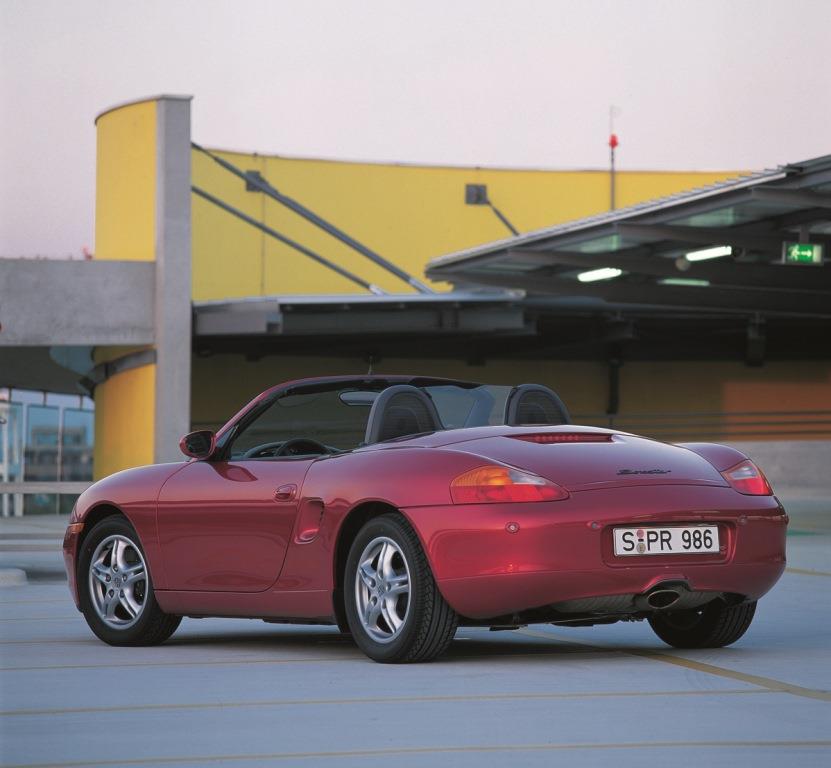
Looking back at the first two years of the Porsche Boxster, we see a unique story of success. Especially because in its technical concept the Boxster continues the mid-engined design so typical of Porsche for such a long time.
Even the very first 356/1 prototype built in the Austrian town of Gmünd came with its engine in the middle. And the most outstanding racing Porsche in the early years of the Company, the 550 Spyder, followed this principle now providing the foundation for all successful racing cars the world over.
The Porsche Boxster clearly proves that the mid-engine concept is ideally suited for a sports car with everyday driving qualities. For the two luggage compartments in the Boxster, providing overall capacity of 260 litres or 9.1 cu ft, offer more space than in any other roadster in this segment. In developing the soft roof, Porsche’s engineers placed the emphasis above all on minimum wind noise. An absolutely unique factor is the time of just 12 seconds taken by the roof to open and close electrically at the touch of a button. For safety reasons this mechanism only works with the car at a standstill and with the handbrake on. The special system of seals and drainage pipes on the roof, finally, prevents any kind of moisture from getting inside the passenger compartment.
Despite their very ample experience with aluminium and plastics in motor racing, Porsche’s engineers and designers use „classic“ steel plate panels for the hot-galvanised bodyshell of the Boxster. The reason, quite simply, is that steel guarantees very good deformation and crumple behaviour in the event of a collision, as well as optimum ease of repair, without forfeiting on lightweight design and construction.
Even in standard trim, the interior proudly displays all the features typical of a Porsche in a young, up-to-date style, naturally including two airbags. True to the marque’s tradition, the ignition lock is on the left side of the steering wheel. The instrument panel with its three main instruments is compact and clearly focused in design, again without denying that typical Porsche style. And the Boxster is particularly accurate when it comes to road speed displayed not only on an analogue dial, but also by large digital figures.
Two types of seats are available, both with electric backrest adjustment: the sporting and comfortable standard seats and the sports seats with enhanced side support. And there are also seats with full electrical adjustment of all positions and functions.
The power unit featured in the Boxster is of course a six-cylinder horizontally-opposed engine modified to meet the requirements of our modern day and age: Water cooling and four-valve technology first featured and improved to perfection on the race track in the 911 GT1, help the Boxster reduce fuel consumption and keep emissions to a minimum. At 150 kW (204 bhp) developed at 6000 rpm from 2.5 litres, engine power is exemplary. Torque peaks at 245 Newton metres or 181 lb-ft at 4500 rpm, with more than 200 Newton metres or 147 lb-ft consistently available between 1750 and 6500 rpm.
Porsche’s engineers have introduced a number of highlights in creating this flat-six power unit. The flow of coolant, for example, follows the same pattern as in Porsche’s racing engines, that is the cross-flow principle keeping all cylinders and combustion chambers at the same consistent temperature. And the coolant flow ducts around the cylinders and through the cylinder heads themselves are separated.
The crankshaft and the auxiliary shafts driving the camshafts are enclosed in a bearing bridge made of aluminium/grey-cast iron in composite structure. This hard core within a two-piece light-alloy housing ensures consistent bearing play at changing temperatures, at the same time reducing mechanical engine noise by damping any vibrations. The valves are driven by four overhead camshafts and cup tappets with hydraulic valve play compensation. The opening times of the intake camshafts are varied by adjustment units in the drive chains (the Porsche Variocam patent). The entire valve drive is furthermore completely free of maintenance thanks to the use of automatic chain tensioners and hydraulic compensation for play.
Fuel injection and ignition are both masterminded by Bosch Motronic M5.2. Fuel supply is sequential through a separate injection jet for each cylinder, thus following the firing order of the engine. The amount of fuel required on each combustion stroke is determined by a hot-film air mass meter in the intake manifold and by oxygen sensors featuring particularly accurate stereo control.
The ignition is fully electronic without requiring any kind of mechanical distributor thanks to the solid-state system comprising six individual coils. To adjust to fuel grades below 98 RON premium plus, the elctronic ignition system comes with cylinder-specific knock control retarding the ignition point on individual cylinders whenever necessary.
As of the 1999 model year the Boxster has an even longer cruising range, since it now features the same tank design as the 911 with overall capacity of 64 litres or 14.1 Imp gals.
In choosing their preferred form of power transmission, purchasers of the Boxster have the choice of either a five-speed manual gearbox or – at extra cost – „intelligent“ five-speed automatic transmission similar to the automatic gearbox in the new 911. Inter alia, Tiptronic S in the Boxster excels through its particularly simple and convenient control functions, the selector lever positions in the automatic mode being limited to P, R, N or D. And when you move the shift lever from the automatic transmission plane on the right-hand side to the manual plane on the left, you can choose gears by means of the toggle buttons on the steering wheel.
In its gearshift characteristics, the automatic transmission follows the driver’s power and performance commands by choosing the most suitable out of five programs in the control unit, depending on the respective situation. When the driver suddenly takes his foot off the accelerator and applies the brakes, for example, the automatic transmission recognises his wish to slow down and, accordingly, shifts down and not up. The converter clutch is thus locked in a fully controlled mode as of second gear, following a program based on the driver’s typical style of motoring.
Featuring wheel guidance and track control components made of aluminium, the suspension of the Boxster reflects the state of the art in every respect. Consistently applying the shared parts principle, Porsche has found an economic and at the same time compact solution for the two types of axle both based on McPherson design.
Providing elastokinematic adjustment of wheel toe-in both on the front and rear axle when taking a bend, Porsche’s engineers and suspension specialists ensure a high standard of driving safety particularly under extreme conditions. Toe-in at the front and toe-out at the rear provide increasing understeer with increasing lateral acceleration, safely slowing down the Boxster in a critical situation.
The rack-and-pinion steering is boosted by a hydraulic servo designed to provide secure directional stability at high speeds and agile steering response in fast bends and on winding roads.
The brake system features thoroughbred racing technology of the most advanced standard. Like the 911, the Boxster comes with light-alloy four-piston brake callipers in monobloc design. The particularly sturdy and stable single-piece callipers are also used in the 600-bhp 911 GT1 super-sports car as well as in Formula 1. The brake discs, in turn, are inner-vented both front and rear. And last but certainly not least, the ABS 5 anti-lock brake system fitted as standard reflects the latest state of the art.
Apart from 17-inch wheels with 205/50 ZR 17 and 255/40 ZR 17 tyres, the Boxster is now also available with 18-inch turbo-look wheels. In this case tyre dimensions are the same as on the 911 Carrera (225/40 ZR 18 and 265/35 ZR 18).
Side airbags providing an even higher standard of passive safety are naturally also available on the Boxster. And the car also comes as an option with the same seats as the 911 featuring electrical adjustment and a memory function, just as it is available with the new generation of Porsche sports seats.
PCM Porsche Communication Management is likewise available on the Boxster, this special unit in the middle of the instrument panel combining all the controls for the radio, air conditioning, mobile phone, on-board computer and navigation system.
Parking assistance with four distance sensors in the rear panel is available as an option, just as the sporting driver may choose a special three-spoke steering wheel naturally complete with airbag.
Over and above the high level of standard trim, the Boxster is available with three upgrade packages enabling the customer to individualise the interior of his car.
The Classic package places the emphasis on sophisticated but reserved style. Standard features in this case include metallic paintwork and leather seat upholstery all round.
The discreet interior is characterised by granite-grey paintwork on the windscreen frame, the covers on the storage boxes in the doors and the centre console, as well as a number of panels and trim surfaces within the car. The instrument surrounds, door closing handles and gearshift lever knob insert (release button on Tiptronic S models) all come in amber. And it almost goes without saying that the Classic package is available with all standard interior colours. The Trend interior trim package adds discreet touches of colour to the interior, using graffiti grey in conjunction with interior panels finished in body colour. The Trend Boxster comes exclusively in zenith blue metallic and dragonfly turquoise metallic paintwork.
The roof is graffiti grey, the seats are finished in graffiti grey/charcoal grey Trend upholstery, and the steering wheel, handbrake lever, door handles and shift lever knob all come in black leather, just like the standard models. The instrument panel, door lining, centre console cover, instrument cover and airbag covers, finally, are finished in a special graffiti grey film. The instrument surrounds, A-pillar trim, door surrounds, rollbars and the insert in the shift lever knob (the release button on the Tiptronic S selector lever) are all painted in body colour.
The Sport Design package introduces metal grey into the interior on the lower half of the instrument panel, the instrument surrounds, the switch trim panels, centre air nozzle, seat shells, seat switch panels, seat controls, the door surrounds at the left and right, the trim panel in front of the door opener, the door storage box cover, and the insert on the shift lever knob (release button on the Tiptronic S selector lever), which are all painted in metal grey. The driver also enjoys the special feeling of ample black leather on the new three-spoke airbag steering wheel, the sports seats, the handbrake handle, the shift lever knob, the cover on the front passenger airbag, the rollbar cover, the cover on the centre console and the upper half of the instrument panel. The side panels on the front centre console, the gearshift trim panel and the door linings, in turn, are covered by a black rhomboid-design film.
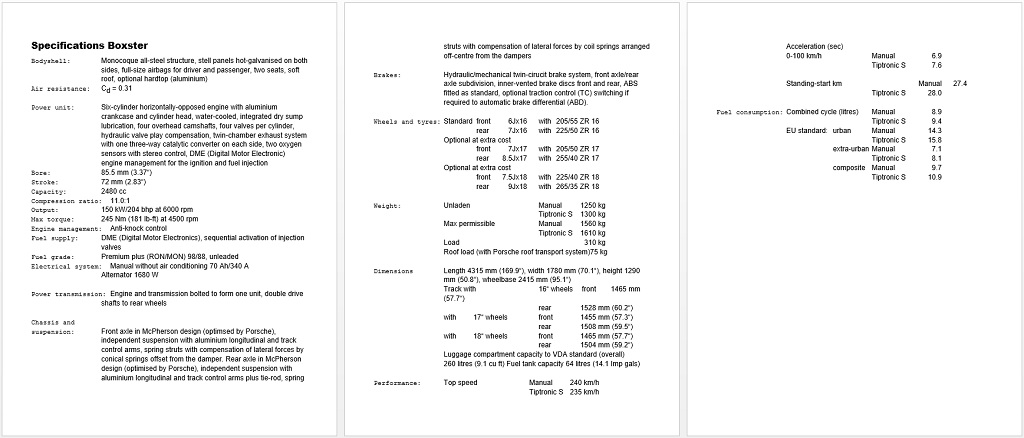

Boxster 1998 - USA
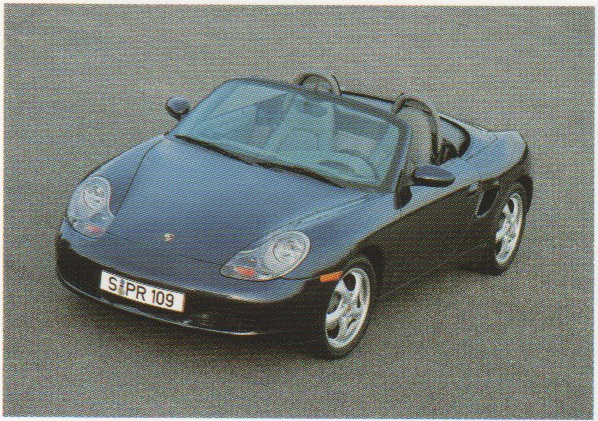
Boxster 2000
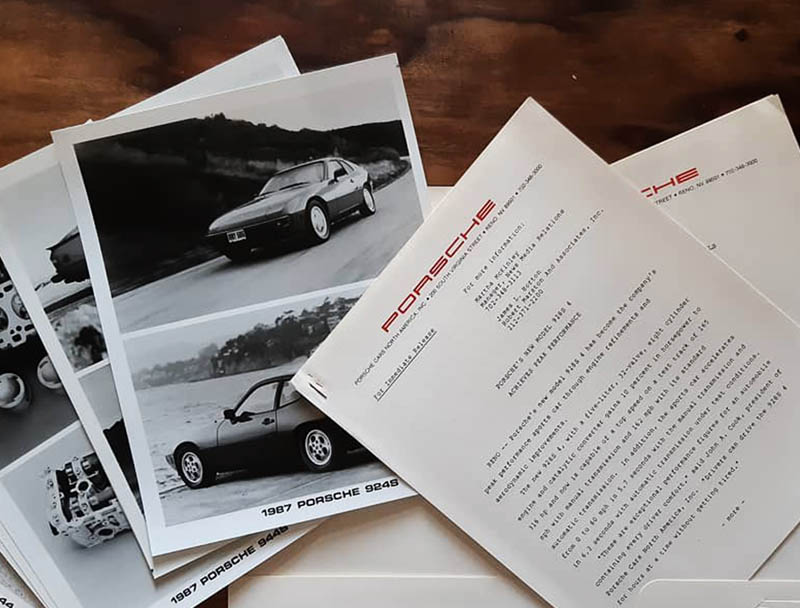
Porsche Press kit
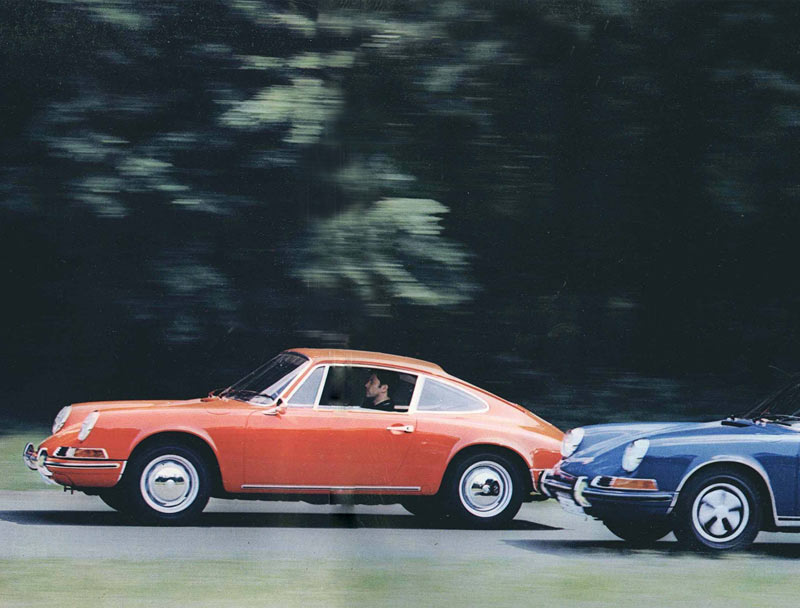
Porsche Literature
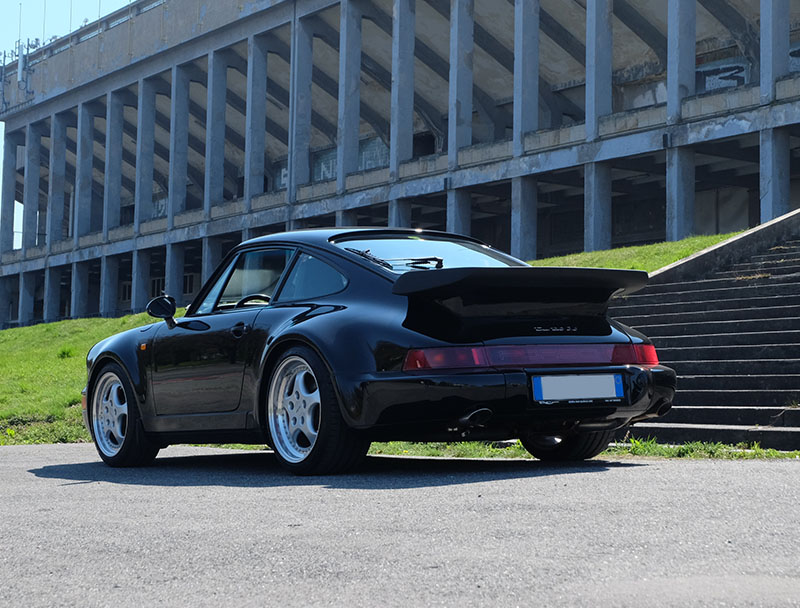
Our Porsche Cars